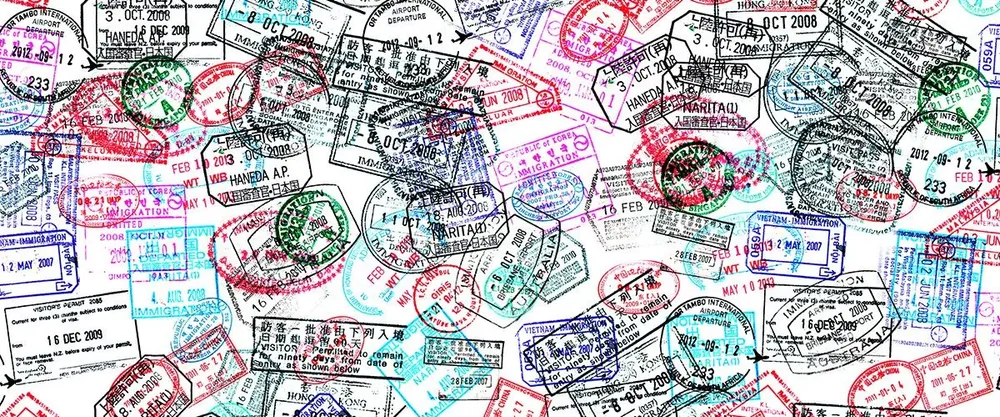How to Obtain a Work Visa in Australia
Australia is one of the most beautiful and bio-diverse countries on Earth. This island continent houses eight ecosystems, including deserts, tropical and subtropical regions, temperate forests and grasslands, mountainous regions, and tundra. Not only does it boast 16,000 miles of coastline, the Land Down Under is also home to the world’s largest coral reef system composed of over 2,900 reefs and 900 islands stretching over an area of 133,000 square miles. The interior outback and the bush areas surrounding Australia’s bustling modern cities are full of rich history and breathtaking landscapes and natural wonders.
Along with its natural beauty, Australia has a consistently robust economy, accessible high-quality health care and education, and its residents enjoy a high standard of living. Australia’s cities are centers of culture and diversity.
If you have your heart set on creating a life in Australia, be prepared to navigate a labyrinth of work visa categories, each with its own rules and requirements. Australia is a warm and welcoming country, to be sure. But that does not mean you can just hop on a plane intending to pound the pavement for a job.
This article will discuss some of the most common types of Australian work visas and summarize what you will need to do during the application process.
It will take a lot of research and careful planning to make your dreams of relocating to Australia a reality. Relocate can connect you with qualified Australian Immigration Advisors to help you select the right program and navigate the visa application process.
Skilled Work Visas
The Australian government offers over 100 types and categories of visas to visitors and would-be immigrants to Australia. You will find the different visas that apply to workers on the Australian Department of Home Affairs’ Working in Australia website. You can also consult Australia’s skilled occupation list to learn more about which professions are eligible for which types of visas. Each of Australia’s 20 work visas — typically referred to by a subclass number — has its own visa requirements.
Australia employs the SkillSelect program for individuals who want to immigrate to the country under one of its skilled worker visas. Would-be migrants undergo an assessment and are then rated on a points system. Points are awarded for work experience and English language proficiency, among other parameters.
If you reach a high enough level on the assessment — some work visas require a score of 65 — you can move forward with the application process and, sometimes, even be matched with a potential employer who needs someone with your skills.
Australian work visas can be divided into two basic categories: permanent work visas and temporary work visas.
Permanent Work Visas
Workers who want to live in Australia permanently, bring their families along with them, and even eventually apply for Australian citizenship can do so under the Employer Nomination Scheme (ENS) visa, subclass 186. There are three types of subclass 186 visa streams:
- Direct Entry Stream: This visa stream allows skilled workers to become permanent residents of Australia as long as they have an Australian employer to nominate them, can show English proficiency, and will be engaged in an occupation that is on Australia’s list of eligible skilled occupations.
- Labour Agreement Stream: If your Australian employer is a current signatory to a labor agreement — meaning the Australian government has agreed that there is a need that cannot be met in the Australian labor market or through other visa programs — you might be eligible to work as a permanent resident of Australia under this stream. You must meet all the Direct Entry Stream criteria and any age, skills, and English language requirements of the relevant labor agreement.
- Temporary Residence Transition Stream: This stream allows foreign workers who are already living and working in Australia under certain other visa schemes to convert to permanent resident worker status after three years of work in the country.
All the subclass 186 visa streams require you to be nominated by an Australian employer, have a good command of English, and meet Australia’s health and character requirements. It can take the better part of a year to obtain a subclass 186, which is why consulting with a qualified Advisor on Relocate can help speed up the process by making sure you meet the visa conditions, and your paperwork is in order.
Temporary and Short Stay Work Visas
There are several types of visas that allow you to live and work in Australia on a temporary or short-term basis. For instance:
- If you have a sponsor, you can work in Australia under the Temporary Skill Shortage visa (subclass 482). You must be able to demonstrate English proficiency, be designated as a skilled migrant with approved sponsorship, and possess the requisite skills to do the job.
- If you are a recent graduate of an Australian university, you might be able to stay in the country and work under a Temporary Graduate visa (subclass 485). Be aware that there are a number of criteria you must meet for this visa, including being under 50 years of age and having held a student visa within the previous six months.
- Young people between 18 and 30 years old who are on holiday in Australia might be eligible to extend their stay in Australia through a subclass 462 Work and Holiday visa. They must have a passport from an eligible country and cannot have any dependent children with them.
- Australia offers a pathway to enter and live in regional Australia via a Skilled Regional (Provisional) visa (subclass 489). If you enter the country under this visa, you might be able to convert your visa to a permanent one after a required waiting period.
How to Get an Australian Work Visa
The best way to begin your quest to enter Australia under a work visa is to determine for which type and subclass of visa you are eligible. You can start with a search of Australia’s extensive list of visa types and then analyze your skill set to determine which types of work visas might suit your situation.
Consider working with Relocate to connect with an Australian work visa expert at this stage. Visa selection is of paramount importance because it will inform each step you take along the way. You do not want to embark on a visa application process that can take up to a year only to find out that you have to withdraw your application — or worse, get turned down — because you did not apply for the visa that best suits your needs and skill set.
The following outlines the general steps to take when applying for an Australian skilled migration visa:

![[RLOC-015] additional image 2.jpg](https://storage.googleapis.com/relocate-production-store/RLOC_015_additional_image_2_261be54ce4/RLOC_015_additional_image_2_261be54ce4.jpg)


